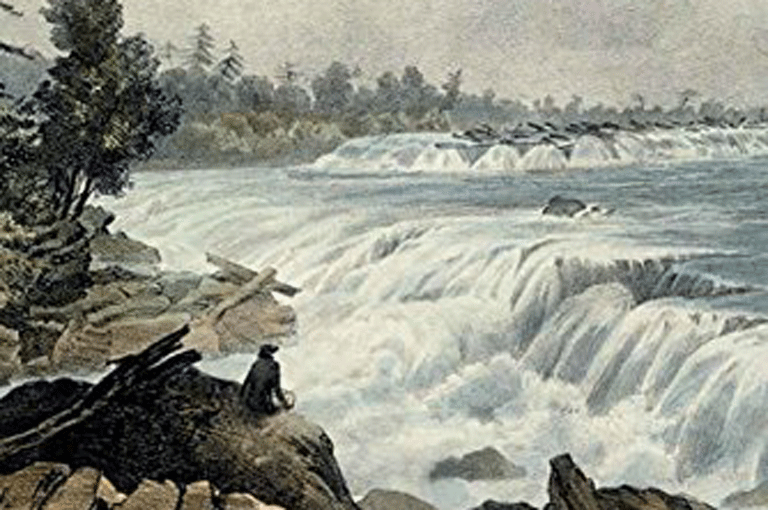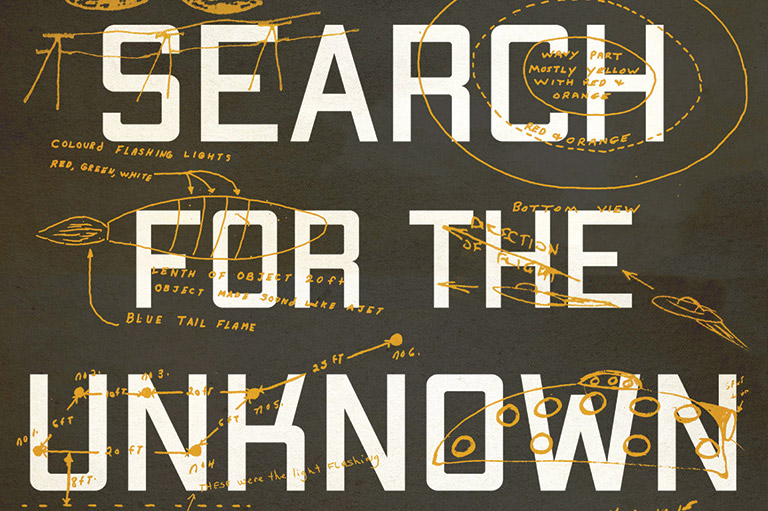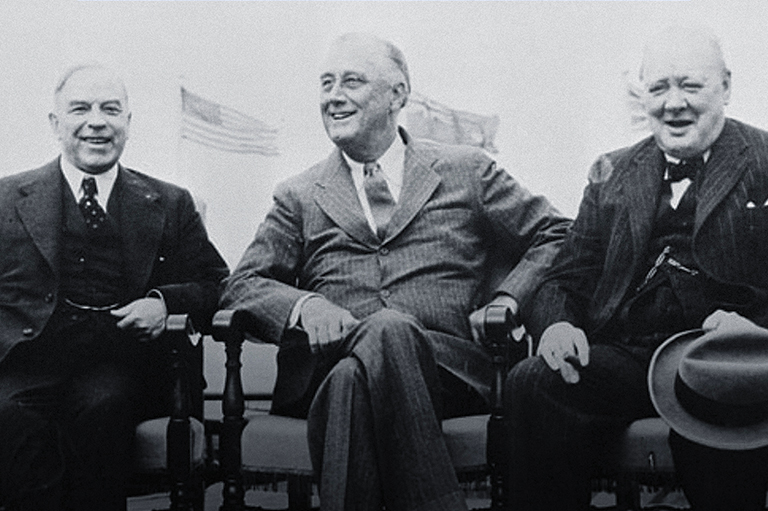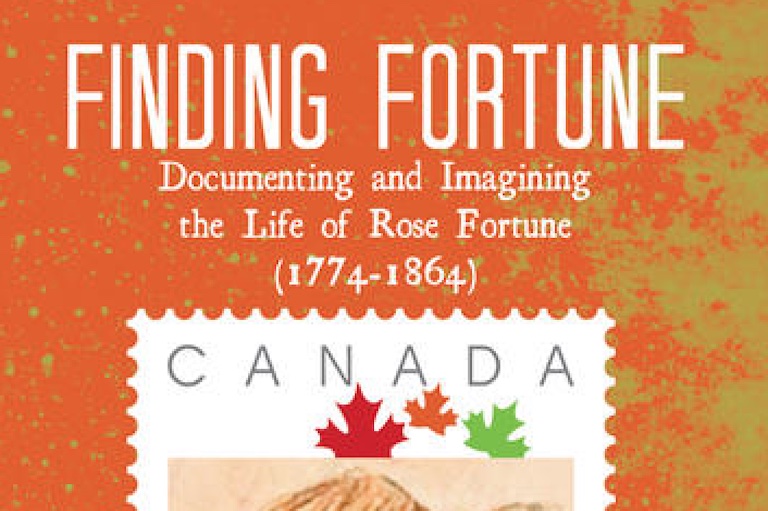Behind the Summit Series

A series of eight games played fifty years ago in September 1972 was the first time the best Canadian professional hockey players faced off against the Soviet national team that had risen to the top of the amateur hockey world in the 1950s and 1960s. As the stars of Team Canada realized that their opponents were talented, highly skilled, and disciplined, Canadians became transfixed by the “friendly” competition between sporting representatives of countries on opposite sides of the Cold War.
In Ice War Diplomat: Hockey Meets Cold War Politics at the 1972 Summit Series, Gary J. Smith offers behind-the-scenes stories about meetings that allowed the series to happen as well as the often-extraordinary efforts that were needed to sustain it. While politicians in both Canada and the Soviet Union had come to understand that hockey could be significant for diplomacy, it wasn’t only the heightened tensions following the USSR’s 1968 invasion of Czechoslovakia that stood in the way of on-ice competition.
Besides Canada having pulled out of international hockey to protest the exclusion of professionals, there were struggles between Hockey Canada, the Canadian Amateur Hockey Association (CAHA), the National Hockey League (NHL), and NHL Players Association executive director Alan Eagleson regarding the arrangements for any such matches. There was also interference by International Ice Hockey Federation (IIHF) president John “Bunny” Ahearne. And on the Soviet side there were concerns about the consequences for their players’ amateur status, as well as differences between longstanding national team coach Anatoli Tarasov and other political and sporting officials.
For Smith, who was himself an amateur hockey player, his first overseas posting began in 1971 at the Canadian embassy in Moscow, and it led him into the heart of negotiations to arrange a series involving Canadian professional club teams — or possibly even national hockey teams.

The Snowman
by Gary J. Smith
There was confusion aplenty. Who was speaking for whom and about what? The Canadian embassy in Moscow decided to seek clarification from the international section of the Soviet Ministry of Physical Culture and Sport, which controlled the Soviet Ice Hockey Federation and, in turn, the Soviet teams and coaches.
I accordingly showed up on December 1 in the office of V.I. Koval, head of the international section. He was not happy. Indeed, he was quite angry, asking me why there should be a response to all the boys’ applications when the CAHA was ignoring their requests for Canadian participation in the Izvestia and Sovetsky Sport tournaments. “We want contact at all levels,” he snarled, “not only with boys.”
I told him he knew the reason why there was no contact at senior levels. He would also recall that Canada had been ready to play a series of games with the USSR, but this had been scuttled by the IIHF president, who had received Soviet support. The CAHA therefore had decided to go forward with the junior boys’ contests. If the Soviets were prepared to initiate contact at this level, it might generate goodwill and lead to resumed contact at more senior levels.
When asked about Tarasov’s recent article and proposal, Koval said the Soviet coach was “anxious to play against any Canadians.” Koval himself, though, was concerned about the consequences for Olympic eligibility for any Soviet players taking part. I pressed him: If that was the case, why then was Tarasov proposing to play games before the Olympics? That set him off again: “It’s impossible — these games [as proposed by Tarasov] will never take place.”
There was an apparent split in Soviet thinking between the coaches and sports officials about the timing and the nature of any encounter with Canada. Just over two weeks later the Izvestia invitational tournament got underway in Moscow. Without Canadian or American participation, there were only four teams involved. The USSR, which beat Czechoslovakia and Sweden but lost to the Finns, ended up winning the tournament but only on a highest-total-goals basis. It wasn’t an aweinspiring performance. Tarasov and fellow coach Arkadi Chernyshev were behind the bench as usual.
The tournament had been initiated four years earlier to mark the fiftieth anniversary of the October Revolution, when the Bolsheviks had seized state power. Originally called the Moscow International Tournament, by 1969 it had been renamed the Izvestia Tournament, after the official government newspaper that became its sponsor. The main organizer, chief cook, and bottle washer was the paper’s principal sportswriter, Boris Fedosov. He was a curlyhaired, likeable individual with a sense of humour and imagination, a rarity in the tense, steely-eyed environment of Moscow officialdom.
Fedosov had helped to finalize the official logo of the tournament: a smiling goalie snowman with a large stick in one hand and a catching glove in the other. The chinstrap on his helmet was unfastened in a carefree manner. It created a chuckle when you saw it. The logo was on pennants, pins, posters, and other publicity materials, and participants would receive porcelain replicas or wooden dolls in the snowman’s image. Fedosov himself used the pseudonym “Snegovik” (the Snowman) when he wrote his regular columns about the tournament and hockey in general. He was estimated to have a readership of about six million sports fans across the USSR.
The day after the Izvestia tournament ended on December 20, 1971, was the eve of the winter solstice, and darkness in Moscow began to fall not long after 3:00 p.m. It was snowing outside, and I had put my feet on the desk to begin my obligatory afternoon read of this Russian-language newspaper. It was tough sledding and boring trying to find any real news among the various industrial and agricultural production statistics and stilted accounts of self-selected international and domestic meetings intended to advance Soviet interests. I, therefore, had taken to the habit of reading the paper from back to front, which allowed me to start with the lighter fare of sports.
The Soviet team needed a new challenge. It was time to play the Canadian professionals, without reservations.
Sign up for any of our newsletters and be eligible to win one of many book prizes available.
There was Fedosov’s column chronicling the windup to the tournament, written in his comparatively jaunty style for a Soviet journalist, all of whom had to operate within the limits of official censorship. He described the exploits of various players and their goals but began to reflect on the bigger picture. The tournament lacked the excitement of 1969, when Canada had last appeared and when the tickets had last sold out. Yes, the USSR had won again, as it had over and over again in international play, but the Soviet team needed a new challenge. It was time to play the Canadian professionals, without reservations.
My feet hit the floor, and I jumped up. This was not the Soviet coach in a sports journal, but a columnist in the official government newspaper who was also a board member of the Soviet Ice Hockey Federation. The column had to have been cleared by the authorities.
Peter Hancock’s office was next to mine. A fellow Russian speaker, keen hockey player, and senior to me, with an extensive background in East European affairs, Hancock possessed an exceedingly sharp mind. What did he think? Could be significant, he replied. Why not call up Fedosov and pursue it?
While the Moscow telephone system was bugged and technologically shaky, and numbers were difficult to obtain, I eventually got “The Snowman” on the line. He was pleased and honoured that someone at the Canadian embassy read his columns. Aware of those who might be listening, he suggested it would be better if we met in person to further discuss what he had written. The year-end holidays were upon us, so he suggested a time early in the new year. He would invite some Soviet hockey officials to participate, and we all could have some vodka together. He extended his Christmas greetings. Since the USSR no longer celebrated this religious holiday, I reciprocated by wishing him and his family a Happy New Year, with the hope Grandfather Frost and the Snow Maiden would pay them a visit.
The holidays came and went. The invitation firmed up later in January for an evening encounter at the centrally located Izvestia building. It wasn’t wise to go alone to an event like this, particularly when vodka was likely to flow. Hancock was more than willing to attend with me. We brought a reel-to-reel film, in a heavy metal case, of the 1971 Stanley Cup final between the Chicago Blackhawks and the Montreal Canadiens.
The gathering was held in a standard cavernous Soviet meeting room with a high ceiling and chandeliers, framed pictures of Lenin and Brezhnev looking down from the walls. The lengthy meeting table was resplendent with appetizers of caviar, herring, smoked salmon, and black bread, with plentiful bottles of vodka and mineral water. Experienced vodka drinkers knew to eat the fish, its oil coating your throat and stomach linings, before getting into the clear alcohol.
Fedosov had invited what he called “interested persons.” These turned out to be representatives of the Soviet Ice Hockey Federation and the Figure Skating Association, as well as a sprinkling of Soviet athletic stars, including former national hockey team captain Boris Mayorov, Olympian gold-medallist high jumper Valeri Brumel, and the current captain of the Soviet football (soccer) team. Anatoli Tarasov was not among the guests.
Excerpts of the Stanley Cup film were shown, which evoked various oohs and ahhs. The head of the Figure Skating Association commented that we must have sped up the film, as she watched Bobby Hull fly down the left wing and let go a cannonading slapshot. The film made a big impression, and they asked to borrow it for a longer period to show their hockey coaches and players, and particularly members of the national team.
With the film at an end and the food largely consumed, but with plentiful vodka still available, Hancock and I were left alone with Fedosov and Andrei Starovoitov, the general secretary of the Soviet Ice Hockey Federation. A former defenceman on the champion Central Army team in the late 1940s, he became a well-respected referee on the international circuit at eight World Championships from 1955 to 1966. He had worked his way up the slippery Soviet hockey ladder through persistence and a knowledge of how to navigate the communist shoals. Now three years into his influential job, he still knew how to measure his words. The impression he conveyed was that of a no-nonsense straight shooter.
At only five feet eight, Starovoitov was towered over by his young, everpresent shadow, Viktor Khotochkin, who stood six feet four and was well over two hundred pounds. His title was International Secretary of the Federation, and he acted as the official interpreter for Starovoitov when so required. We spoke Russian with them nevertheless. On his own, Khotochkin was discreet and spoke quietly, but you knew he was always listening attentively and watching carefully, as his KGB training had taught him.
We finally arrived at the main topic of conversation for the evening: Was the USSR ready to play a team of Canadian professionals without any conditions? The history of the question was rehearsed by Starovoitov. He wanted to know why Canada had backed out of the series of games that had been agreed upon with the CAHA during the 1971 World Championships in Switzerland. The Soviet team had planned their schedule around this event and had lost quite a large sum of money as a result of Canada cancelling the games.
Drawing on guidance from Ottawa, we explained that the CAHA had every intention of proceeding, but IIHF president Ahearne had intervened with a new set of conditions of his own, which were unacceptable to the CAHA and Hockey Canada. As a result, the games were never held.
Starovoitov replied that this was the first time he had ever heard about any Ahearne conditions and then snapped that Ahearne had no authority to interfere in games arranged by two member countries of the federation if the proper rules were followed.
We agreed but said this principle was not always followed and cited the case of the role played by Ahearne in preventing the East Ottawa Voyageurs boys’ team from playing games with a team from Finland. When Starovoitov asked how Ahearne had been able to accomplish this, we told him of Ahearne’s threat to withdraw the 1974 world championships from Finland. Starovoitov smirked, saying it appeared Canada was trying to blame Ahearne for all our problems, and adding that it seemed a little strange that it was always Canada that was having it out with Ahearne, while other countries in the international federation got along with him just fine. Canada’s differences with Ahearne were well-founded, we countered.
On to the subject of professionals. We made the point that there was really no difference between players in Canada that were known as “professionals” and those in the Soviet Union who played for leading teams such as Central Red Army, Wings of the Soviet, Dynamo, and Spartak. Each country’s players could be considered as professionals, as they received a salary for playing and were occupied most of the year only with hockey. In the case of Central Red Army, it began practising early in July and continued until May, a longer period than for the NHL teams.
Starovoitov did not dispute this, but Fedosov interjected to say the difference was that the Soviets did not call their players professionals while the Canadians did, and we were only creating problems for ourselves by using this term. It was an interesting take on the situation, as if everything could be solved simply by having Canadian players call themselves something like “workers” rather than “professionals.”
Despite these differences, Starovoitov and Fedosov were unanimous in wanting to re-establish Canadian-Soviet hockey contacts. We said it was our understanding that the CAHA was ready to discuss this and urged him to contact the Canadian delegation at the Winter Olympics and speak to the CAHA representative, who we expected to be present even though we had withdrawn our hockey team (the first time Canada had not been represented since ice hockey was made an Olympic sport in 1920).
Starovoitov undertook to do so. Fedosov, for his part, urged Canada to return to the Izvestia games with any sort of team it wanted.
When we returned to the embassy the next day, taking a little time to pull our thoughts together after the previous night’s festivities, Hancock and I prepared an account of what Starovoitov had to say and met with Ambassador Robert A.D. Ford to discuss the ramifications. Ford had never played hockey himself due to his polio, but he was a keen fan and was astutely aware of the political importance of the game to Canada’s relations with the USSR.
He also was no stranger to the downside of hockey exchanges, having had to speak sharply to the Allan Cup-winning Sherbrooke Beavers in January 1966, during their visit to the USSR, when they initiated a bench-clearing brawl after being badly outscored by the Soviet national team. Ford had threatened to take action to cancel the Beavers’ two remaining games unless their deportment improved. Tarasov would later say this was the only time he willingly encouraged his players, including his goalie, to take the gloves off with Canadians.
Our message to Ottawa, which Ford wanted to sign to give it added weight, made two key points. Firstly, Soviet sports representatives were enthusiastic to resume hockey contacts with Canada in a context that would set aside the contentious issue of IIHF and Olympic eligibility. The term “exhibition series” was mentioned. The format could either be national team versus national team or club versus club after the coming Sapporo, Japan, Olympics. Secondly, such games would have a major impact on the Soviet public, which was well-informed about Canadian hockey and would line up by the thousands to obtain tickets for a Canada-Soviet match. The Sovetsky Sports Club tournament in September 1972 and the Izvestia national team tournament in December 1972 offered ready-made vehicles in the USSR.
The ambassador added that it was important to move beyond the realm of good intentions. The next step had to be for the Canadian side to make a firm set of proposals, including dates, for the Soviet side to consider. Ford also emphasized that the embassy had developed a good relationship with Starovoitov and the Soviet Sports Ministry and that, if it was agreed upon by Canadian hockey authorities, the embassy could begin more detailed discussions in Moscow with the hope that a signed agreement could be reached by the time of the IIHF congress and world championships in Prague, Czechoslovakia, in April.
From Ice War Diplomat: Hockey Meets Cold War Politics at the 1972 Summit Series, by Gary J. Smith. Reprinted with permission of Douglas & McIntyre.
Classic Sports Diplomacy

For twenty-seven days in September 1972 Canadians from coast, to coast, to coast, as well as one hundred and fifty million Soviet citizens across eleven time zones, were transfixed by the first ever hockey series between the best players from both countries. The mass appeal of the eight exhibition games provided the perfect common ground for easing tensions between adversarial countries and for reducing the risk of conventional or nuclear war — a goal sought by both governments.
Watching the skills of the Soviet players, Canadians identified favourable human faces in communism, while the long-haired, individualistic, neversay- die Canadian players became household names throughout the USSR. It was classic sports diplomacy.
Over the decades, the games have become iconic. Some say it was the greatest series ever played, others that it provided the greatest moment in Canadian sports history. The matches have been listed among the top defining events in Canada’s twentieth century.
We celebrated our last-second victory, while the Soviets — avoiding their loss, but with some justification — argued that the game of hockey was the ultimate winner. Hockey did improve, melding two different systems, and the NHL internationalized, welcoming players from various countries, including, eventually, talented Russians.
The players of 1972 developed a warm, respectful bond. Joint anniversary celebrations were held in 2012 and 2017. A hockey bridge was built between Canada and Russia. It was fully expected that the fiftieth anniversary in September 2022 would be a crowning event for surviving members of both sides, with banquets, tours, the production of fresh memorabilia, and rapturous publicity.
Russian President Vladimir Putin’s February 24 invasion of democratic Ukraine and the brutal pursuit of his war have cast a very dark cloud over the international situation, including our bilateral relations and the anticipated celebrations of this legendary sporting series. Whether the hockey bridge can — or should — withstand the weight of Russian tanks remains a debatable question of values and for the policy of engagement. — Gary J. Smith
Themes associated with this article
Advertisement
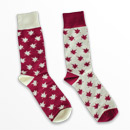
Our online store carries a variety of popular gifts for the history lover or Canadiana enthusiast in your life, including silk ties, dress socks, warm mitts and more!

